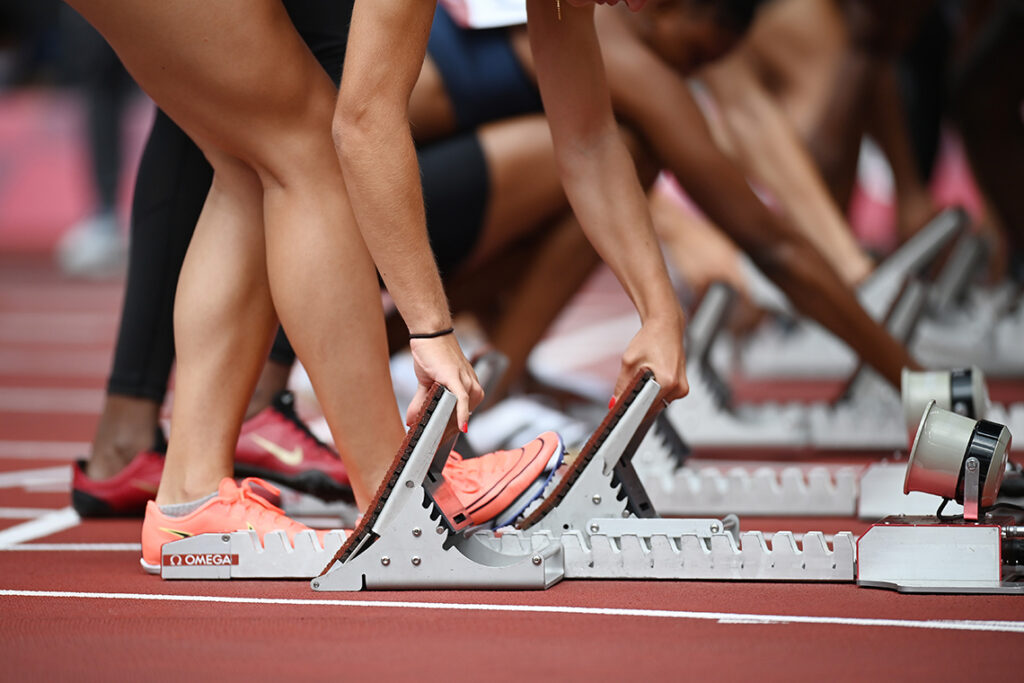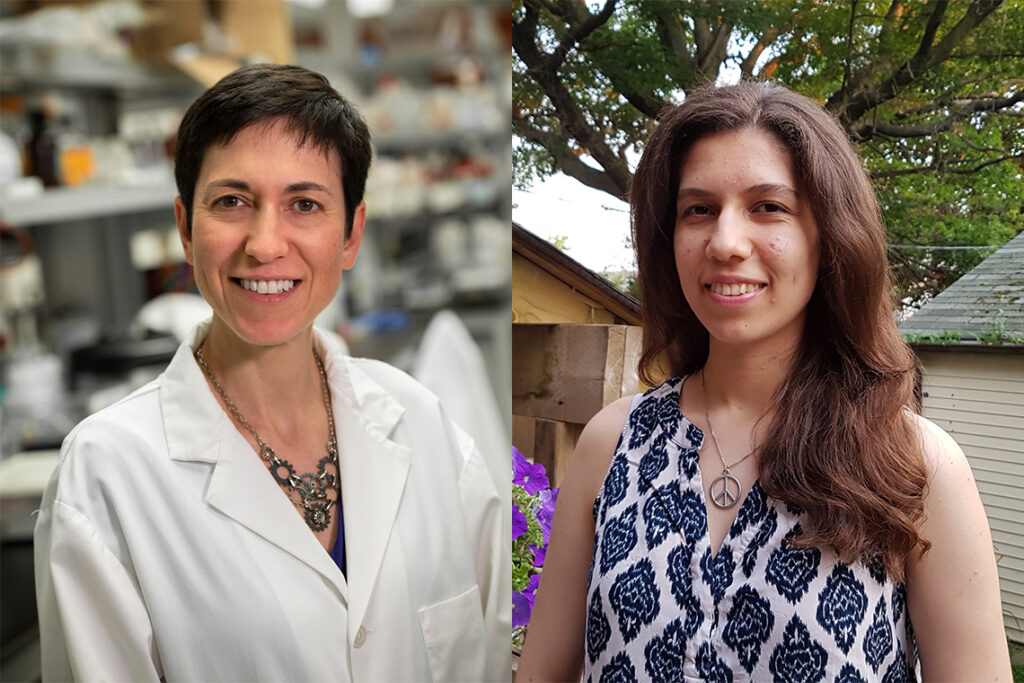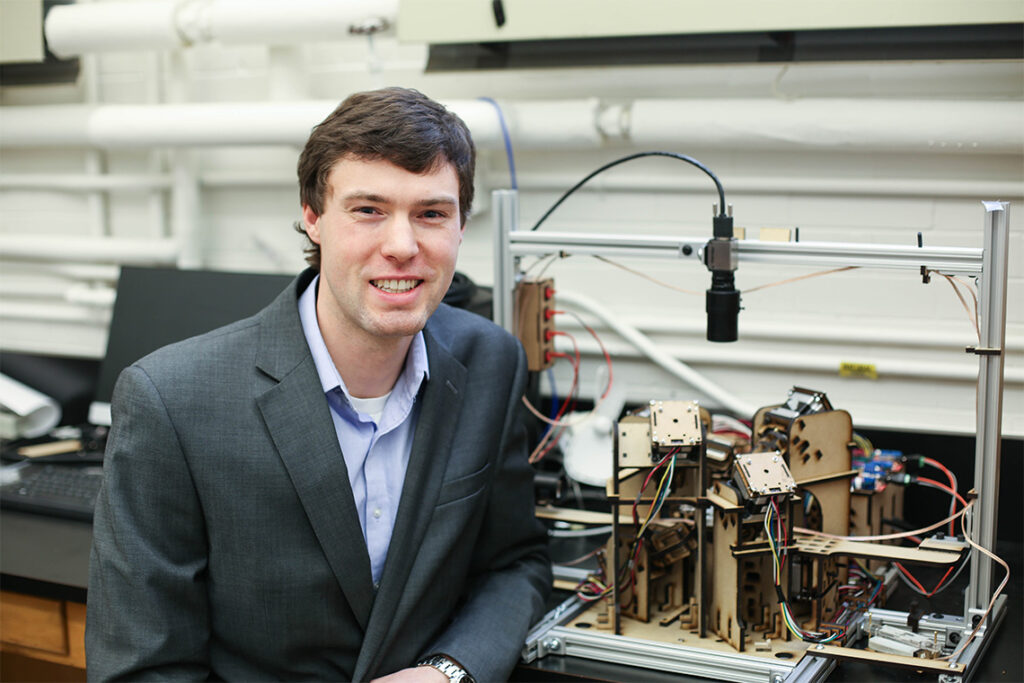U of T researcher uses VR to improve mental health of urban refugees, displaced youth
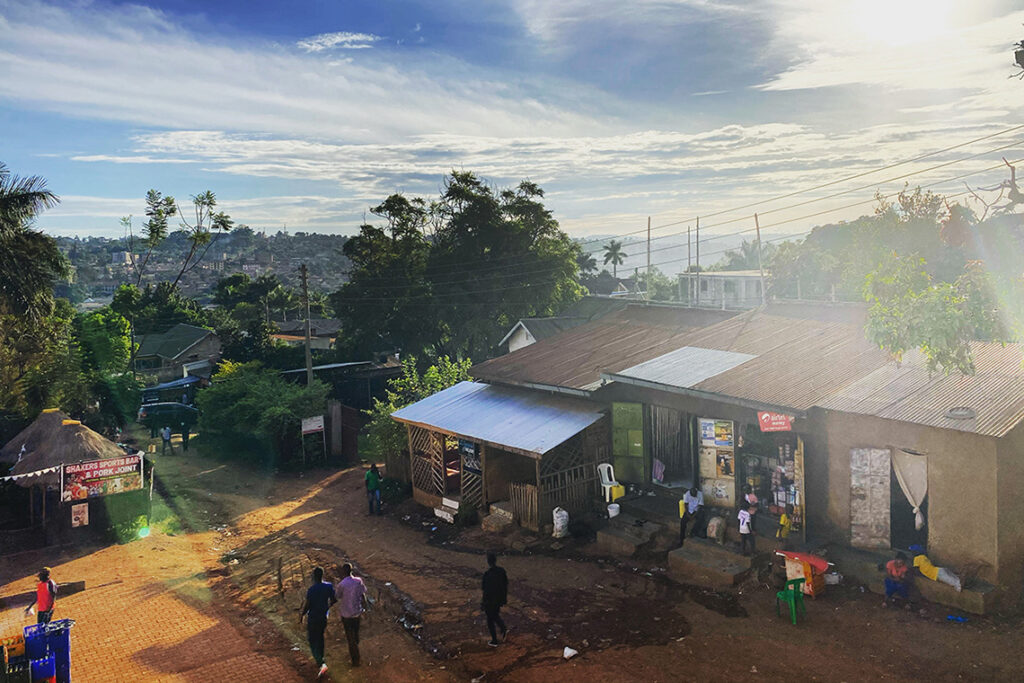
Carmen Logie put on a virtual reality headset for the first time three years ago. She watched a short film about a Liberian woman’s experience in the Ebola epidemic.
“It was a life-changing moment,” says Logie, an associate professor in the University of Toronto’s Factor-Inwentash Faculty of Social Work. “I felt like I was there with her. It was such a powerful way to develop empathy.
“I immediately started thinking about how I could use this amazing technology in my work on health equity.”
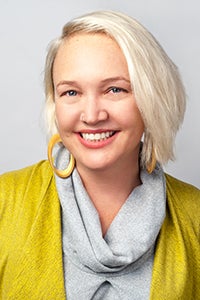
So, Logie began investigating VR health-care applications and quickly discovered a body of evidence – from high-income countries – demonstrating its mental health-care benefits, specifically in improving mood, reducing stress and teaching self-care.
“But there was no evidence on how it could help in low-income countries or humanitarian contexts,” Logie says.
Three years later, Logie is launching a study of a VR intervention focused on mental health in urban refugees and displaced youth. Working closely with youth and local community partners in Uganda, which hosts the third-largest number of refugees in the world, her team will develop a VR experience aimed at improving mental health literacy, reducing mental health stigma and decreasing symptoms of depression.
Logie’s previous research found alarmingly high rates of depression among refugee and displaced young people living in five informal settlements – commonly called slums – in Kampala, Uganda’s capital. Nearly three-quarters of young women and about half of young men aged 16 to 24 reported depression symptoms.
“Now that we’ve measured this urgent problem, we’re focused on designing and measuring solutions,” says Logie, who is Canada Research Chair in Global Health Equity and Social Justice with Marginalized Populations.
In addition to VR, the study will evaluate other mental health interventions delivered via text messages and web-based applications – both alone and in combination with VR. These will include psychological first aid, a World Health Organization approach that trains laypeople to provide practical support and care.
The VR content employed will be based on interviews with youth and community partners to understand the key factors that influence mental wellbeing, as well as strategies they find effective in managing stress. The plan is to co-develop a 30-minute VR session – half of which will be devoted to a youth describing what it’s like to live with mental health challenges.
“They might be walking through their community talking about their depression and how they’ve felt stigmatized,” says Logie. “Then maybe they’ll demonstrate some of the self-help approaches they’ve learned and how they access formal mental health support.”
Those watching the session through VR, meanwhile, will be immersed in the storyteller’s 3D environment.
The second half of the session will be interactive, allowing users to choose an avatar and practise coping strategies in virtual settings. Naimul Khan, director of the Ryerson University Multimedia Research Lab and an expert on designing user-centred VR systems, is leading the VR design, development and implementation.
Mental health concerns disproportionately affect refugees and internally displaced individuals. And, despite the fact that 40 per cent of the more than 80 million displaced people globally are under 18 years old, Logie says most studies on mental health interventions have focused on either young children or adults.
“There’s a knowledge gap around what works with adolescent refugees that we want to help fill,” she says. “We also know very little about mental wellbeing among refugee youth living in urban areas, rather than formal refugee settlements, or camps.”
Urban refugees tend to be overlooked because they’re more dispersed, adds Logie, even they confront unique pressures beyond the trauma of war and losing their homes. Unlike refugees in camps, where some food, sanitation and shelter is provided, urban refugees rarely have adequate access to the essentials.
Logie says it took some persistence to bring her VR idea to fruition. She initially acquired a headset and brought it to Uganda so her research collaborators could try it out. “They had the same reaction as me: we’ve got to find a way to use it,” she says. But securing funding for a novel investigation of a relatively leading-edge technology wasn’t easy. “I was getting the message from grant application reviewers that VR was more suited to high-income countries,” Logie says.
Logie acknowledges that it’s vital to adapt technology requirements to suit low-income contexts, but says the cost of VR headsets – which can be sanitized and shared by community agencies – continues to fall. “Why shouldn’t somebody in a refugee camp or slum access a digital tool that someone in Toronto is using to boost their mental health?”
Grand Challenges Canada, an agency funded by the Canadian government and other partners, awarded the study $250,000 through their Global Mental Health Program – the third project of Logie’s it has funded.
Logie says the research is ready to launch. The interview process will begin later this summer, VR development will take place through the fall and the VR intervention will be implemented and evaluated in Kampala starting in the new year.
